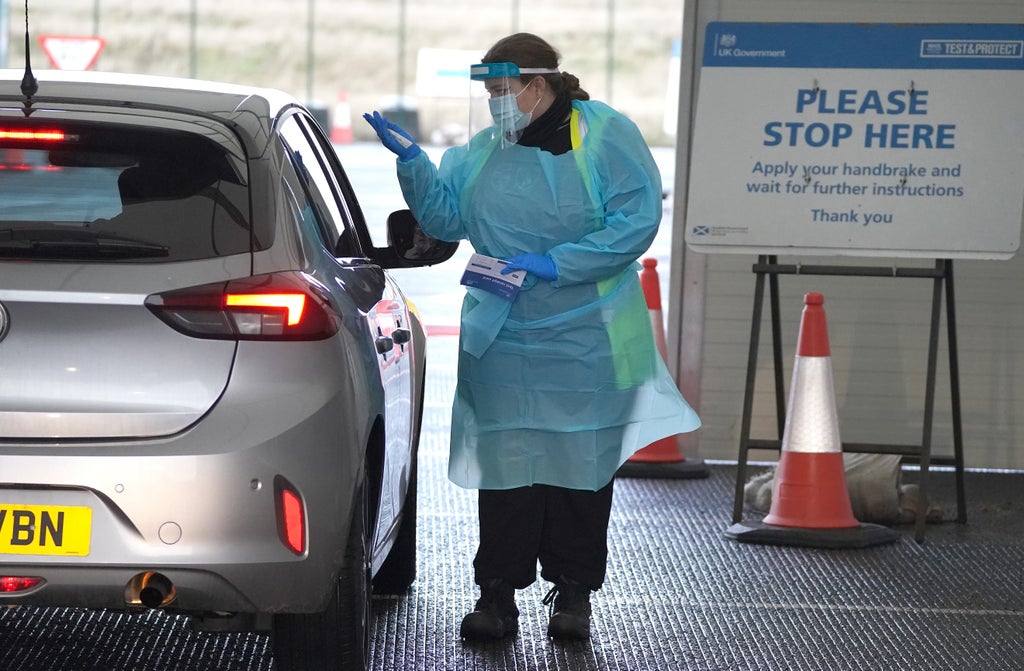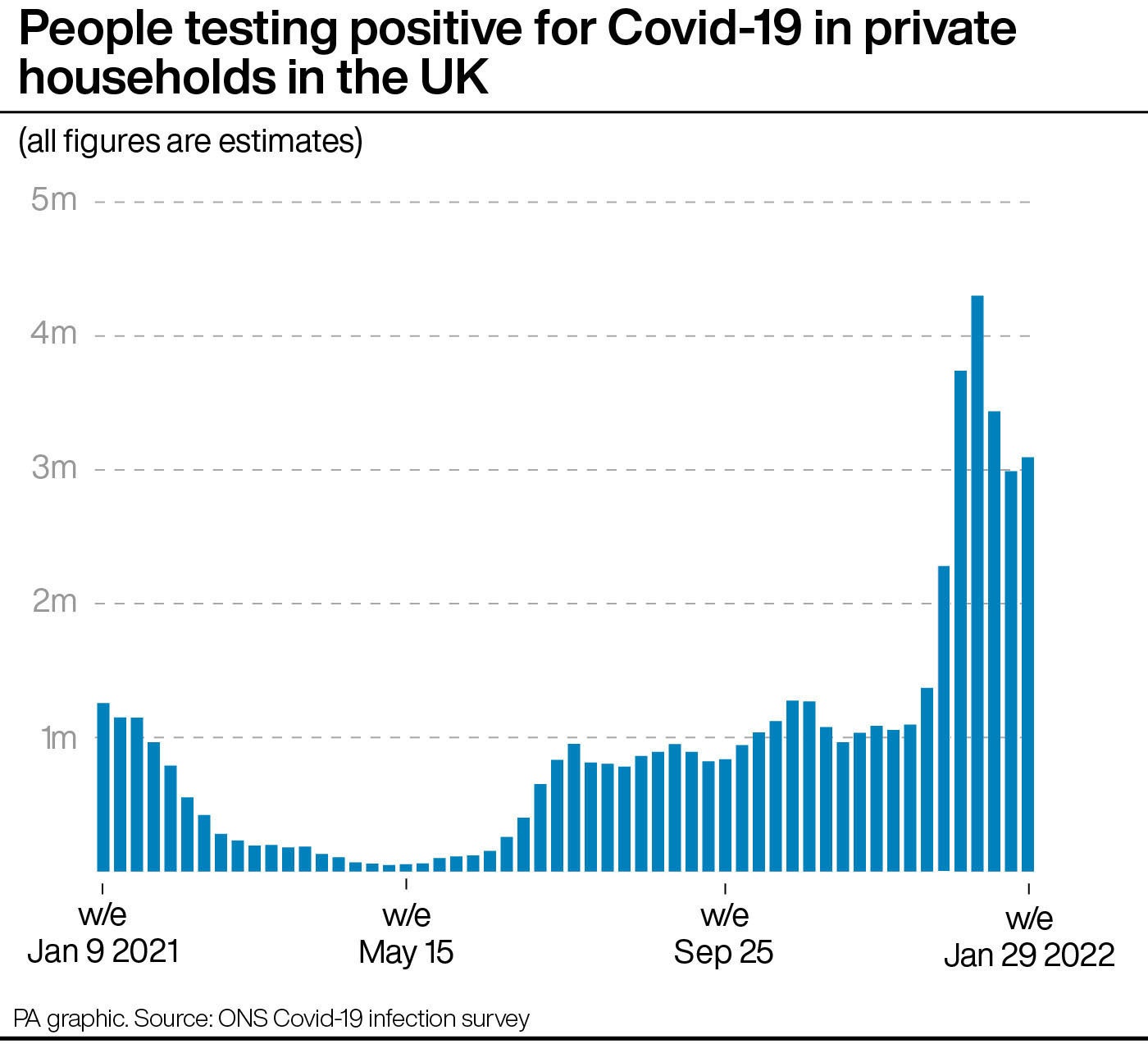
Covid-19 infections have stopped falling in the UK, with levels in each of the four nations having plateaued or started to increase, new figures suggest.
Wales and Northern Ireland both saw a rise last week in the number of people in private households likely to have Covid-19, according to the Office for National Statistics (ONS).
Estimates for England and Scotland were broadly unchanged.

The figures suggest the recent drop in infections from record levels at the start of the year has now come to a halt, with a high prevalence of the virus persisting in all parts of the UK.
An estimated one in 20 people in private households in England had Covid-19 in the week to January 29, or 2.6 million people – unchanged from the previous week.
In Scotland, the ONS describes the trend as “uncertain” with around one in 30 likely to have had Covid-19 last week, unchanged from the previous week, although the number of people with the virus is estimated to have risen slightly from 163,600 to 185,100.
For Wales, the ONS estimates around one in 20 had Covid-19 last week, or 139,000 people, up from one in 30, or 99,500.
Northern Ireland has also seen a week-on-week increase, from one in 20 (96,500 people) to one in 15 (136,300).
Levels of infection are continuing to rise among young people.
An estimated 13.1% of children in England between the age of two and school year six were likely to have had Covid-19 last week, up from 11.8% the previous week and the highest level for any age group.
For children in school years seven to 11, the rate was 7.6%, up from 6.5%.
The number of Covid-19 infections in the UK, which is estimated every week by the ONS, is a more reliable guide to the level of coronavirus across the country than the number of cases reported every day by the Government.
This is because the number of infections provides a snapshot of the prevalence of Covid-19 within the entire community population of the UK, and estimates the percentage of people who are likely to test positive for the virus at any one point – regardless of when they caught the virus, if they have had it before and whether they have symptoms.
It is based on a sample of swab tests collected from tens of thousands of households across the UK.
By contrast, the number of cases of Covid-19 announced each day by the Government is limited only to those people who have reported themselves as testing positive for the virus, and is affected by how many people are coming forward for tests or who are taking a test because they know they have coronavirus symptoms.







